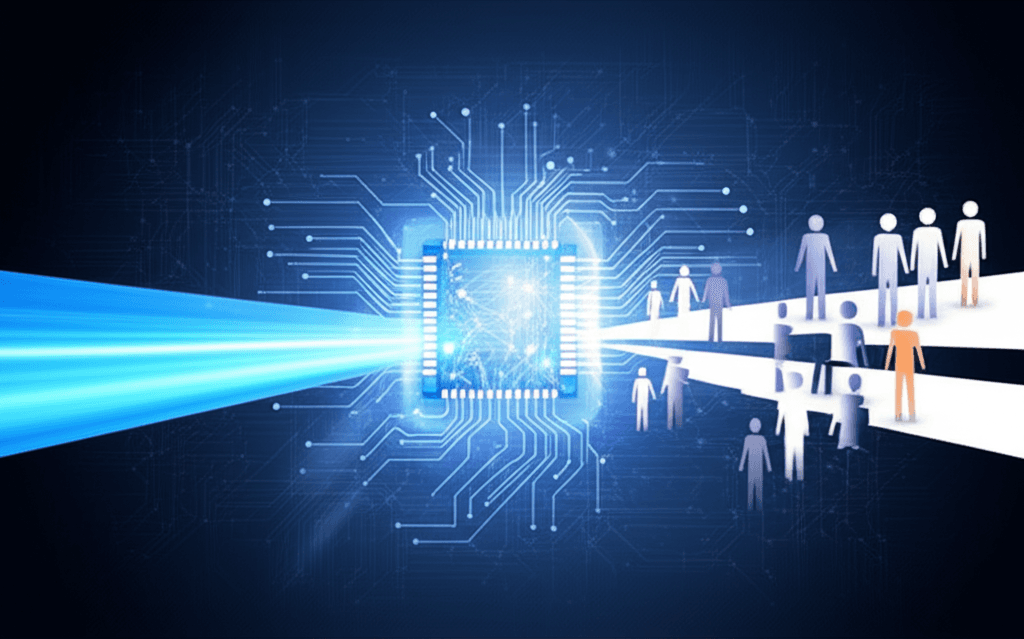Beyond the Code: AI's Gender Bias Fuels New Inequality Engine
AI's hidden gender bias: exploring how flawed data and lack of diversity create a powerful engine for inequality.
July 7, 2025

Artificial intelligence is rapidly transforming industries from healthcare to finance, but a critical flaw lies at its core: gender bias. AI systems, designed to be objective, are learning from and amplifying long-standing societal prejudices, creating a new and powerful engine for inequality.[1] From hiring algorithms that favor men to medical diagnostic tools that are less accurate for women, the consequences of this digital bias are far-reaching and threaten to roll back decades of progress toward gender equality.[2][3][4] The problem isn't a malicious line of code, but a reflection of the flawed human world these systems are built upon.
The primary root of AI's gender bias problem lies in the data used to train it.[5][4] AI models learn by analyzing vast datasets, and if this data reflects historical and societal biases, the AI will learn and perpetuate them.[3] For example, if an AI is trained on a decade's worth of hiring data from a male-dominated industry, it will learn to associate success with male-centric language and career paths.[3][6] This was starkly illustrated when Amazon had to scrap an AI recruitment tool that systematically penalized resumes containing the word "women's," as in "women's chess club captain."[3] Similarly, large language models often reinforce stereotypes by associating professions like "nurse" with women and "doctor" or "scientist" with men.[2][3] This reflects a world where such biases have been prevalent, and the AI, without critical context, simply absorbs these patterns as fact. The issue is compounded by the fact that the data often underrepresents women, particularly women of color, leading to significant performance gaps in technologies like facial recognition, which can have serious consequences in law enforcement and security.[2][7]
The second major contributor to this coded inequality is the lack of diversity within the AI development field itself.[5][8] Globally, only about one in five AI professionals is a woman, leading to a homogenous perspective in the creation of these powerful technologies.[8][7] This lack of diverse viewpoints can lead to unintentional blind spots and the encoding of developers' own unconscious biases into the algorithms.[5][7] When development teams are predominantly male, the nuanced experiences and needs of women and other marginalized groups can be overlooked.[7] This is evident in the design of virtual assistants, which often default to female voices and personas, reinforcing stereotypes of women in service roles.[2] The issue starts as early as education, with women being underrepresented in STEM fields, which then translates to a less diverse workforce building the very tools that are shaping our future.[8][6]
The real-world implications of this algorithmic bias are not theoretical; they have tangible and often detrimental effects on people's lives. In healthcare, AI models trained primarily on male-centric data have been shown to be less accurate in diagnosing conditions in women.[3][8][4] For instance, one study found that certain AI models were twice as likely to misdiagnose liver disease in female patients compared to male patients.[3][8] In the financial sector, biased algorithms can perpetuate the gender pay gap and limit women's access to loans and other financial services.[2][5] In criminal justice, risk assessment tools have demonstrated bias against women of color, potentially leading to harsher sentences and reinforcing systemic inequalities.[4] Even in everyday applications, from AI-generated images that produce stereotypical depictions of job roles to natural language processing systems that misunderstand or misrepresent non-binary gender identities, the technology is actively reinforcing outdated social norms.[8][9]
Addressing AI's gender bias problem requires a multifaceted and proactive approach, centered on the core principles of inclusive data and diverse voices. The most critical step is to ensure that the data used to train AI systems is diverse, representative, and actively cleansed of historical biases.[1][2][10] This means going beyond simply adding more data about women and instead curating datasets that reflect a wide range of social backgrounds, cultures, and roles.[2] Organizations must also implement regular bias audits and continuous monitoring to identify and correct discriminatory patterns in their AI systems.[3] Enhancing the transparency and explainability of AI models is also crucial, allowing for external scrutiny and making it easier to pinpoint and rectify biases.[3] Furthermore, fostering diversity within AI development teams is paramount.[2] Bringing more women and individuals from varied backgrounds into the field will introduce different perspectives, helping to identify and mitigate blind spots that might otherwise be overlooked.[2][10] This effort must begin in education, with programs to encourage more women to pursue careers in STEM.[8] Finally, establishing strong ethical frameworks and regulations for AI development can create accountability and provide safeguards against discriminatory practices.[3] By taking these deliberate steps to break the code of inequality, we can begin to build AI systems that challenge stereotypes and serve as a tool for a more equitable and just future for all.